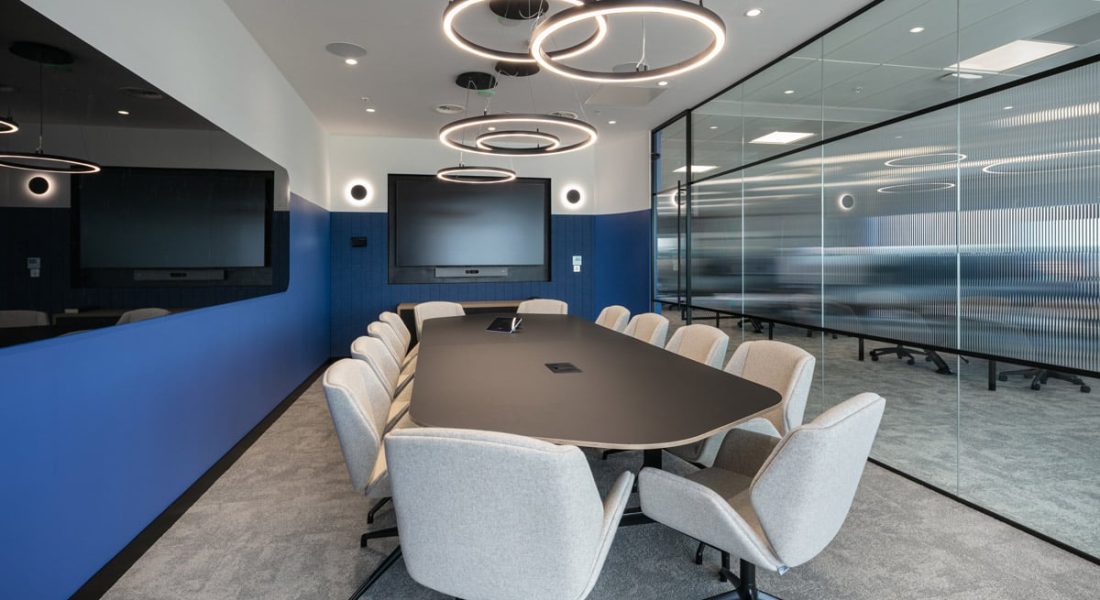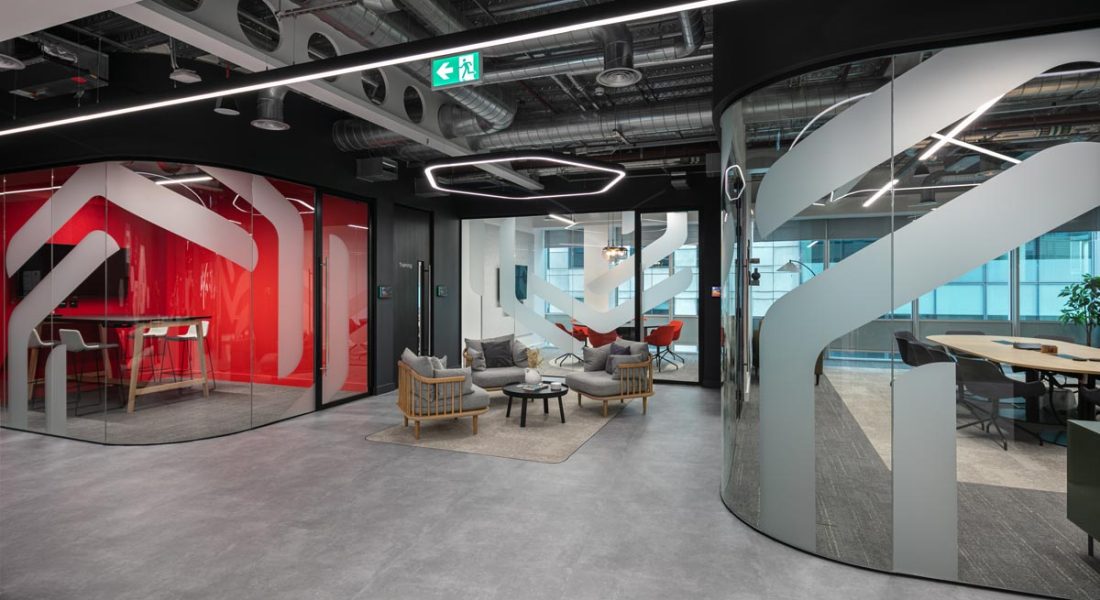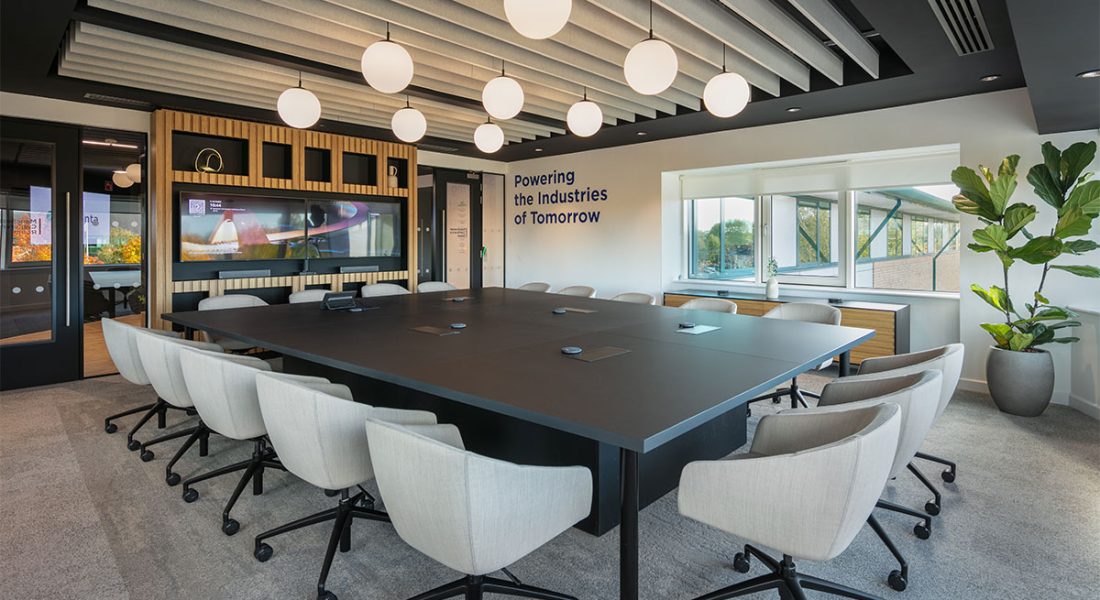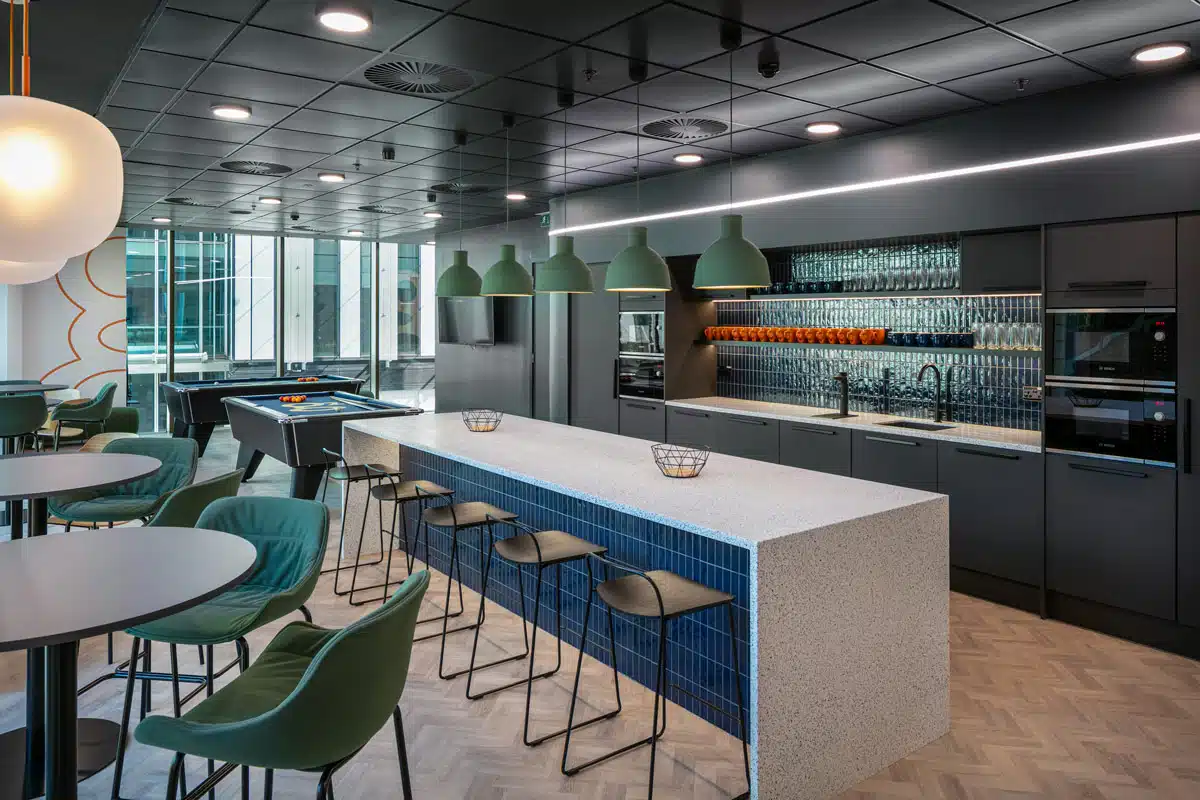In today’s dynamic business landscape, meeting rooms are no longer just functional spaces to tick off agendas. They’ve evolved into strategic environments that drive leadership, support hybrid collaboration, and reinforce company identity. Whether you’re a start-up scaling fast or an established enterprise adapting to change, your meeting spaces can serve as key tools for culture, innovation and inclusivity.
So how do you ensure your meeting rooms actually work?
Rethinking the Purpose of Meeting Rooms
Meeting rooms must:
- Encourage inclusivity, whether attendees are remote or in person
- Reinforce brand and culture through finishes and furniture
- Adapt to different styles of meetings — formal, creative, one-to-one or hybrid
- Integrate technology seamlessly to support collaboration without friction
Supporting Leadership and Culture
Meeting spaces are where leadership is seen and felt. From the layout of the room to the visibility of the speaker, small details make a big difference. Positioning, lighting and even acoustics can affect how ideas are received. If you want confident, productive conversations, the space must support psychological safety and equity of voice — especially in hybrid environments.
ADT Workplace often advises clients to think of meeting rooms as communication tools. How do they shape tone, posture and participation? Do they give senior leaders the tools to influence and listen? Design should support authority without being hierarchical.
Creating a Hybrid-Ready Meeting Room
Hybrid meetings are here to stay. Yet many businesses still operate in rooms built for an in-person era. To future-proof your meeting spaces, you need to design with digital equity in mind.
That means:
- Cameras placed at eye-level to enable direct engagement for remote participants
- Microphone and speaker systems that allow everyone to hear and be heard clearly
- Displays that work just as well for presenting as they do for collaboration
- Lighting that avoids glare or shadows on video calls
- Furniture layouts that make both physical and virtual attendees feel included
A hybrid-ready room should be intuitive and comfortable, removing the friction between people and technology.
Design That Reflects Organisational Identity
Every part of your workplace should tell your story. Meeting rooms are no exception. They should echo your brand’s personality — from the colours and materials to the artwork and signage.
If your business prides itself on creativity, your meeting rooms might feature writable walls, soft furnishings and flexible zones. If you’re focused on precision and professionalism, sharp lines, acoustic panelling and integrated AV might be more appropriate.
ADT Workplace frequently incorporates bespoke joinery, graphics and finishes that tie back to a client’s core values. This not only reinforces brand consistency, but also creates a lasting impression on clients and partners.
Flexibility and Functionality
No two meetings are the same. That’s why adaptable layouts are crucial. Modular tables, stackable chairs, mobile screens and reconfigurable lighting allow a single space to serve multiple purposes.
Some companies opt for fewer, more versatile meeting rooms rather than many fixed-use spaces. This supports agile working and makes better use of floor plate, especially in high-value city centre locations.
Additionally, consider acoustic privacy. Whether it’s phone booths for one-to-ones or larger rooms with sound insulation, employees need to feel confident their conversations are confidential.
Inclusivity by Design
Great meeting room design is inclusive by default, not as an afterthought. That includes:
- Step-free access
- Adjustable lighting and temperature
- Accessible control panels for AV and screens
- Clear way-finding and visual cues
Inclusivity also means catering to neurodiverse needs. Some teams may benefit from rooms with softer lighting, lower visual clutter, and alternative seating choices.
Designing spaces that welcome everyone not only improves participation but also signals a commitment to equity and respect across your organisation.
How ADT Workplace Helps
At ADT Workplace, we see meeting rooms as pivotal components of the wider workplace strategy. Our team blends consultancy, interior design and fit-out expertise to create rooms that don’t just look good — they work hard.
We work with clients to:
- Align meeting room strategy with broader business goals
- Integrate AV and IT seamlessly from the start
- Ensure hybrid functionality is built in, not bolted on
- Incorporate bespoke features that reflect brand and culture
From project scoping to final sign-off, our process is tailored to your needs — whether you’re refreshing one boardroom or rolling out a national workspace transformation.







